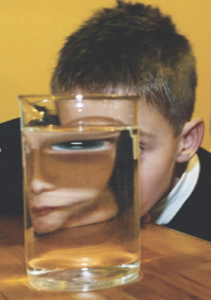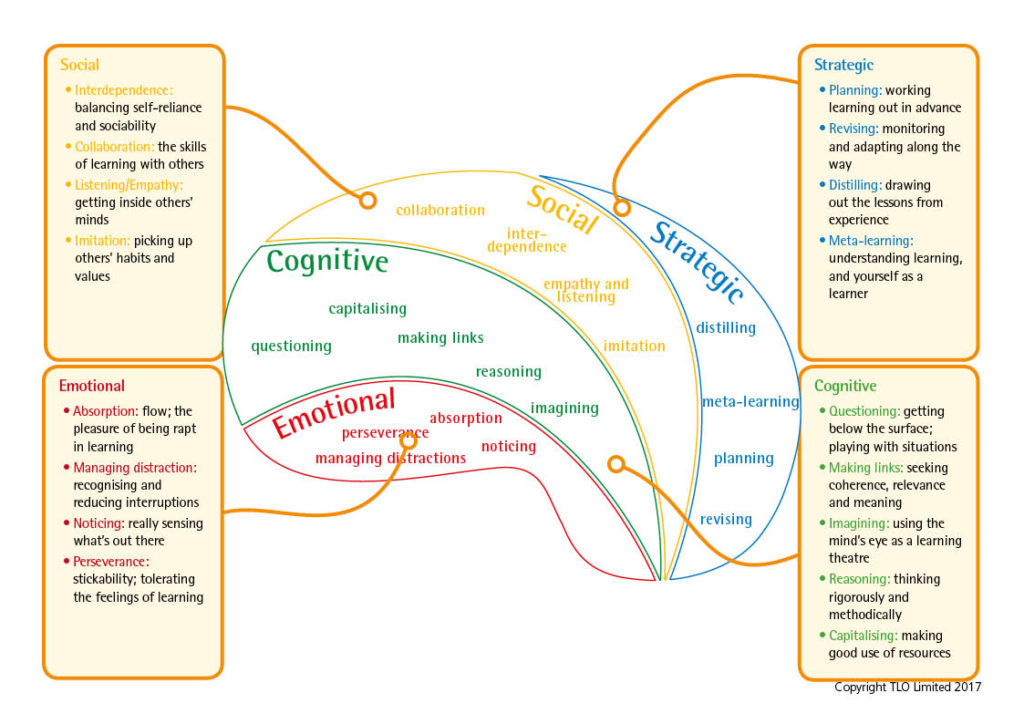 Building Learning Power is an approach to helping young people to become better learners, both in school and out. It is about creating a culture in classrooms — and in the school more widely — that systematically cultivates habits and attitudes that enable young people to face difficulty and uncertainty calmly, confidently and creatively. Students who are more confident of their own learning ability learn faster and learn better. They concentrate more, think harder, and find learning more enjoyable. They do better in tests and eternal examinations. And they are easier and more satisfying to teach.
Building Learning Power is an approach to helping young people to become better learners, both in school and out. It is about creating a culture in classrooms — and in the school more widely — that systematically cultivates habits and attitudes that enable young people to face difficulty and uncertainty calmly, confidently and creatively. Students who are more confident of their own learning ability learn faster and learn better. They concentrate more, think harder, and find learning more enjoyable. They do better in tests and eternal examinations. And they are easier and more satisfying to teach.
To thrive in the twenty-first century, it is not enough to have a clutch of examination certificates. Pupils need to have learnt how to be tenacious and resourceful, imaginative and logical, self disciplined and self-aware, collaborative and inquisitive.
Further than this, it is a statistical certainty that not all youngsters are going to do well in exams. The characteristics of a better learner are (at least) as valuable for them, in helping them discover the things they’d love to be great at doing, and strengthening their will and skill to pursue them.
If schools are to be properly responsible to their pupils, they need to focus on preparing them for the uncertain future by developing these characteristics, as well as ‘covering the curriculum’. This is not always easy! Building Learning Power aims to help schools achieve this big ambition by providing a foundation of ideas, understanding and practical examples in a structured programme of professional development.
How is it done? Two big pictures
Much of a BLP programme is built around two important models, or frameworks: one relating to learners, and one relating to teachers and schools.
The Supple Learning Mind
The Supple Learning Mind framework offers a coherent picture of what a powerful learner is like, providing a basic working language for talking about young people as learners. It displays the set of dispositions — learning habits — that BLP considers as characterising learners, as learners.
A rich framework for learning
The Supple Learning Mind framework embraces each of the domains of learning and these are shown in its four parts:
- The Emotional domain of learning (sometimes described as Resilience)
- The Cognitive domain of learning (sometimes described as Resourcefulness)
- The Social domain of learning (sometimes described as Reciprocity)
- The Strategic domain of learning (sometimes described as Reflectiveness)
This learning framework shows that learning isn’t just about having a good memory; it includes how we feel, how we think, how we learn with others and how we manage the process of learning. It shows that learning is a complex process. Furthermore it provides a language that helps teachers to think about how they cultivate each of the learning behaviours and helps students to gain a better personalised understanding of how they learn content.
Each domain clusters together the high value learning behaviours that best make that domain work well. For example the social domain is made up of the learning behaviours of interdependence, collaboration, listening and empathy and imitation.
The Teachers’ Palette
The second framework, the Teachers’ Palette, maps aspects of school culture and teachers’ approaches that help to cultivate learning habits.

This video describes what lies behind the palette’s labels.
Growth mindset — and beyond
People often ask how Building Learning Power relates to the widely known ideas of growth mindset associated with the work of Professor Carol Dweck. As an encapsulation of what we have aimed for, we could not do better than Carol Dweck herself, who wrote that
‘Building Learning Power … builds on my work and translates the idea of growth mindset into powerful and practical ways of organising twenty-first century schools. These schools will turn out not just high achievers but great all-round learners and leaders.’
What do schools think?
You can find accounts of two schools’ experience with Building Learning Power by following the links:
Learning Power isn’t make believe … The impact of BLP …

![BLP_Brain_Generic_no-Rs-[Converted]](https://www.buildinglearningpower.com/wp-content/uploads/2016/12/BLP_Brain_Generic_no-Rs-Converted-300x216.png)

Comments are closed.